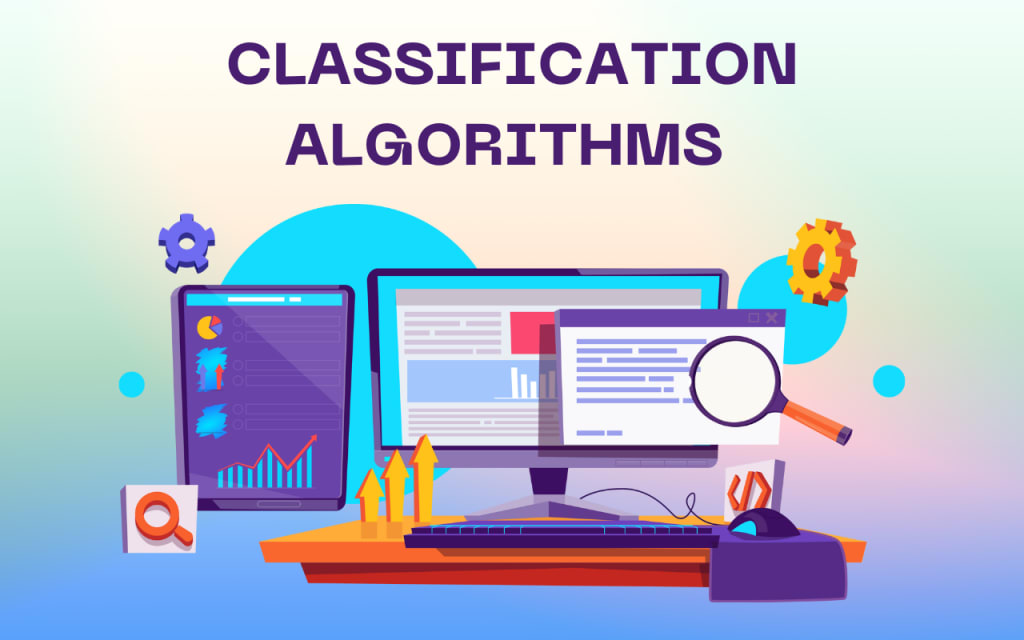
Classification algorithms are one of the essential types of machine learning algorithms and are also the most popular.
Classification algorithms identify items in a dataset based on their characteristics. They can be applied to categorize data, such as identifying spam messages or determining whether a customer is likely to purchase a product. These algorithms can also predict the probability that an item belongs to a particular group.
Classification algorithms aren’t just limited to text; they can also be used with images and audio. But before we dive into how they work and what they’re used for, let’s look at how you can choose between various classification algorithms based on your specific needs.
1. Decision Tree
The decision tree algorithm is a classification algorithm that creates a tree-like structure to determine the possible outcomes for an input. This algorithm is often used in data mining and machine learning to predict values for unknown variables based on known values of other variables.
The decision tree algorithm starts with a root node, which splits into two child nodes according to whether the value of some attribute is less than or greater than some threshold. Each of these child nodes has two more children, one for each possible value of another attribute. This process continues until all possible values have been considered.
Advantages:
- It can handle numerical and categorical variables, making it versatile and applicable to many datasets.
- It requires minimal training time compared to other algorithms because humans can easily interpret it.
- It has good generalization capabilities when applied to new data sets because each split on a tree represents one possible outcome in the real world.
Disadvantages:
- The algorithm can be slow and inefficient if an attribute has many possible values.
- The algorithm requires more data than other algorithms because it has to consider every possible value of each attribute when creating a tree.
- It can be challenging to interpret the results compared to other algorithms, such as decision trees or neural networks.
2. Naive Bayes
In classification, the Naive Bayes Classifier is an algorithm that makes use of Bayes’ theorem. It can be used to forecast probabilities of an event based on prior knowledge and experience.
The classification is based on the assumption that each feature has an independent effect on the class, which means that there are no interactions between features. Therefore, it can be used for both supervised and unsupervised learning.
Advantages:
- It is easy to understand and implement
- It is simple to implement and can be used with a small amount of data
- It performs reasonably well with large datasets
Disadvantages:
- It does not perform well with small datasets
- It is slow when used for large datasets
- Noise affects its performance
- It does not provide reasonable predictions for new data
3. Stochastic Gradient Descent
Stochastic Gradient Descent is a type of classification algorithm. It minimizes the cost function by moving the weights closer to zero. It can be used for supervised and unsupervised learning, but it works best with supervised learning. The algorithm involves calculating an error term for every training example and then updating the weights based on that error term.
Advantages:
- It’s simple and easy to implement
- It’s easy to parallelize
- It’s fast enough for most applications
Disadvantages:
- It’s slow when compared with other algorithms (such as support vector machines)
- It’s not suitable for large datasets
- It often requires additional hyperparameters
- It doesn’t provide reasonable solutions for non-linear problems
- It isn’t easy to tune the hyperparameters.
4. k-Nearest Neighbor (kNN)
The k-Nearest Neighbor (kNN) algorithm is a classification algorithm that assigns each input vector to the class of most of its k-nearest neighbors in the training data. The classification model is represented by a distance function that assigns each new vector to a class based on its distance from known vectors.
Advantages:
- Simple and easy to implement with linear classifiers such as logistic regression or support vector machines (SVM).
- It is applicable to both regression and classification problems.
Disadvantages:
- It could perform better for high dimensional inputs, which tend to give poor approximation errors.
- It also suffers from sensitivity to outliers: a single observation far from the rest will significantly influence the results.
5. Support Vector Machine
The Support Vector Machine algorithm is a classification algorithm that finds the optimal hyperplane to separate two classes. To do this, it uses a training set of examples and a kernel function that maps input data into higher dimensional space. The algorithm then discovers the best separating hyperplane. This is done by maximizing the margin between the two classes.
Advantages:
- It’s swift and works well with high-dimensional datasets
- It can be trained using both linear and non-linear kernels.
- The algorithm is also quite intuitive and easy to implement, which makes it a popular choice.
Disadvantages:
- It’s not as accurate as other algorithms like Naïve Bayes and Decision Trees.
- It cannot handle missing values in your data set and can only be used for classification problems.
- The algorithm also tends to overfit, which means it’s prone to making wrong predictions when applied to new data.
6. Logistic Regression
Logistic regression is a type of statistical modeling used for binary classification. It fits a logistic function to the data, which is then used to predict the probability of one outcome given a set of features. One of the most widely used classification algorithms today is logistic regression because it can be applied to supervised and unsupervised learning tasks.
Advantages:
- It’s easy to implement and understand
- It works well with small datasets and large datasets
- It can accommodate missing values in the training set
Disadvantages:
- The model can overfit when there are many predictors in the model.
- It doesn’t perform well on high-dimensional data
- It’s hard to interpret what the coefficients mean
- The model doesn’t generalize well, so it needs to be trained on a separate data set from the one you want to predict.
7. Random Forest
Random forest classification is an ensemble machine learning algorithm that can perform regression, classification, and ranking tasks. When many possible variables are considered, random forest classifiers are often used in data analysis.
Advantages:
- Compared to other algorithms, such as linear regression, they are less prone to overfitting. This means they can provide accurate results on new data sets without being trained on them (or at least not being trained as much).
- They can handle categorical and continuous variables in their calculations, making them useful for various applications.
- They do not require the user to specify how many trees they want in their model upfront; instead, they automatically grow new trees as needed during training, so fewer trees are required overall.
Disadvantages:
- They can be slower than other algorithms, especially when there are many features in the data set.
- They require a more significant amount of memory than other algorithms.
- They are computationally expensive, so they must be better suited for large data sets or applications requiring real-time results.
8. K-Means Clustering
K-Means clustering is a type of classification algorithm that can be used to identify groups in data. It’s useful because it allows you to organize your data into groups based on similarity and then assign labels to each group. It’s a significant first step for building predictive models and can be used as part of a more extensive machine learning system.
Advantages:
- K-Means clustering is relatively easy to understand and implement.
- It’s also fast, which makes it a good choice for data exploration.
- It has a simple implementation and can be part of a more extensive machine-learning system.
Disadvantages:
- K-Means clustering does not have any built-in way of dealing with outliers, so if your data contains many, you’ll need to find some way to remove them.
- It also needs help with massive datasets.
Conclusion
In this article, we looked at eight different classification algorithms you can use in your machine-learning projects. These algorithms were designed to solve different types of problems and have their strengths and weaknesses.
When choosing one, it’s essential to consider the problem you’re trying to solve and what kind of data you have available. I hope you found this article helpful!
Article originally published on Medium: https://medium.com/@HassanFaheem/top-8-classification-algorithms-in-machine-learning-explained-cc96cdd172ba
My Youtube Channel for more content: HsnAnalytics
About the Creator
Hassan
I'm a data scientist by day and a writer by night, so you'll often find me writing about Analytics. But lately, I've been branching into other topics. I hope you enjoy reading my articles as much as I enjoy writing them.






Comments
There are no comments for this story
Be the first to respond and start the conversation.